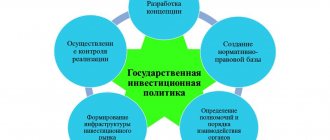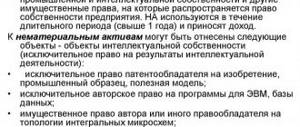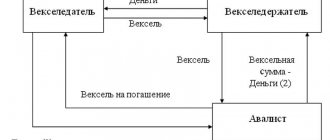olegas Dec 11, 2021 / 143 Views
The term split in the stock market usually refers to the operation of splitting shares. What kind of operation is this, and for what purposes is it carried out? Let's go in order.
A stock split involves dividing each existing share of a company into two or more shares. For example, when dividing by two, one old stock produces two new shares. The price of new shares will be two times lower than that of old ones. Thus, owners of old shares will receive twice as many new shares, the total value of which remains the same.
During a split, there is no new issue of shares, and the company's market capitalization, as well as shareholders' interests in it, remain unchanged. But at the same time, the availability of shares to a wider audience of traders increases, which has a positive effect on their liquidity.
As a simple example of a split, let's look at a fictitious stock. This company has grown from a garage cooperative into a global industry giant and the value of its shares has risen from a few dollars to $5,000 a share. The company's market capitalization is $10 billion and there are 2 million shares issued.
Such a high cost of the company's securities obviously cuts off a huge part of potential shareholders in the form of private investors and traders. Thus, the company's shares lose an entire niche in the stock market, which negatively affects their liquidity and even their value.
Stock split
In this regard, the company's management decides to split the shares in a ratio of 1 to 5. After this procedure, the price of one share began to be $1,000. The number of shares in circulation increased to 10 million, but the company's market capitalization remained the same: 10000000x1000 = $10 billion.
As a result of such a move, as a rule, liquidity increases, demand for shares grows, as well as their price (and, consequently, the market capitalization of the issuer). Firstly, demand is growing from that category of investors who previously could not include them in their portfolio due to their high cost. And secondly, after a split, traders often join in wanting to make money on the fact that stocks after a split, as a rule, steadily rise in price.
To be fair, it is worth noting that not all companies strive for this kind of democratization of their shares. For example, shares of the famous Warren Buffett's company, Berkshire Hathaway, have a value of $313,725. Take a look at their chart for 08/22/2018:
Buffett himself explains this position by the fact that he views his shareholders as a kind of closed club of business co-owners and does not want his assets to turn into another means of profit for stock speculators.
What is a stock split?
A stock split is an increase in the number of securities in circulation with a constant authorized capital. Otherwise, a split is called crushing: one high-value paper turns into several instruments with a proportionally lower price. Property rights and voting rights are divided in proportion to the split ratio.
Let me give you an example: a company has 10 shares, each worth 100 rubles. Then the company decides to carry out a 1/10 split and divides each securities into 10 parts. Now 100 shares are quoted at 10 rubles. each. The capitalization amount in both cases remains unchanged - 1000 rubles.
Why do Stock splits take place?
The main purpose of a stock split is to increase liquidity by attracting more retail investors. Not every individual market participant will add an instrument to their portfolio that costs much more than average market prices, as this may create an imbalance in the proportions between their assets. Further, this process takes on a snowball effect.
The more liquid and tradable the issuer's securities become, the more attractive they look to large institutional players who can provide a significant influx of funds into the company's shares. And increased demand, without a doubt, ensures an increase in the company's capitalization.
In what cases is a stock split usually undertaken?
Split usually occurs in two cases:
- Securities are immediately issued with a high value and a large percentage of property rights, and then a decision is made to split.
- Shares are growing rapidly during the trading process, and a natural need for a split arises.
Consequences for the investor
As a result of the division, the number of securities in the investor's portfolio increases, but this does not affect the value of all assets. There were 100 shares at a price of 1,000 rubles, and now there are 500 at a price of 200 rubles. The total estimate is 100,000 rubles. hasn't changed.
The consequences for shareholders may be that splitting securities attracts new people to buy them who previously could not afford it. An increase in demand in the stock market leads to an increase in quotes, therefore the cost of the investment portfolio and its profitability also increase.
Some traders try to make money on stock split. They buy assets when they receive information about the upcoming division and sell on the wave of rising prices after the procedure is completed. But, for example, a study by broker BKS on how shares behave before and after splitting showed that each story is individual and no general patterns could be identified. They analyzed indicators over the past 20 years.
Advantages and disadvantages
The advantage of a split is increased liquidity and an influx of new investments in the company’s shares. However, this is not always required. For example, Berkshire Hathaway, Inc. Warren Buffett does not accept the split of securities, and their shares are quoted at a price of more than $310 thousand per share.
The founders of the company do not want to involve small speculators in trading and adhere to the idea of a closed club of real shareholders - investors. Those. the increased level of volatility in this case becomes a disadvantage.
Displaying splits on charts
It would be logical to assume that after the split the stock should fall, and a large gap would be visible on the chart. But that's not true. In fact, during a split, the charts begin to display the adapted cost of past periods of quoting the instrument. Those. visually the paper does not fall, and all its past quotes are discounted in accordance with the split ratio.
Reverse split
The share is not split, but, on the contrary, enlarged. The number of securities in circulation becomes smaller, and their price increases. This move is used if the security is very cheap, and the company faces certain problems because of this. Some exchanges have minimum price thresholds for listed instruments.
For example, the NASDAQ exchange sets a minimum share price of one dollar. If the price of one share of the issuer falls below the threshold value, according to the regulations, it must apply consolidation.
Reverse splits pose some challenges. If an investor owned 3 shares and the company decided to consolidate securities at a ratio of 10:1, then his number of instruments will not be enough for one new share. Therefore, since 2002, the concept of fractional lots has been used. They provide the same possibilities in proportion to a portion of the whole paper.
Investors perceive consolidation negatively because they believe that the issuer has problems due to which it does not expect a natural increase in the value of capitalization. Often, after a firm announces a reverse split, its stock goes into even greater decline.
Examples of crushing on the Russian and American markets
There are few examples of crushing on the Russian market:
- Sberbank, which I wrote about above. For example, in June 2007, the price of one ordinary share was more than 107,000 rubles. In July it was reduced by 1,000 times. No one was harmed by these actions.
- A recent example: an index fund for Russian Eurobonds FXRU from the management company FinEx. In December 2021, the cost of one share was reduced by a ratio of 10 to 1.
Now the high price is 9,500 rubles. per share reached another ETF from FinEx – FXIT (a fund for securities of American companies in the IT sector). But this time the management company did not split the asset, but released a new fund with a similar composition to FXIM at an affordable price of $1.07.
In the American market, splits and consolidations are carried out much more often. The most striking examples:
- Apple has split its securities 5 times already: in 1987, 2000, 2005, 2014 and 2021. In August 2021, the ratio was 4 to 1.
- Tesla also carried out a division in August, and the company's shares became 5 times cheaper. This is its first split, but the security has only been traded on the stock market for 10 years.
- Google divided its papers only once in 2014. Discussion of the terms of splitting took as long as 2 years. As a result, the investor's number of shares doubled.
- Microsoft has done stock splits many times and always in a 2 to 1 ratio.
Share split procedure
If we talk about local legislation and the Russian market, the procedure includes several stages:
- The Board of Directors recommends that the splitting of securities be considered.
- The decision is approved by a majority vote at the general meeting of shareholders.
- The necessary registration documentation is submitted to the regulatory authorities.
- Conversion of securities takes place.
- Registration of the results of the emission process.
- Introducing changes in the number of shares and their par value into the charter of the enterprise.
Rights issue
The rights issue company offers additional or new shares only to current shareholders. Existing shareholders are given the right of first refusal to purchase or receive these shares before they are offered to the rest of the public.
Rights issues regularly take the form of share splits and can usually indicate that existing shareholders are being offered the opportunity to take advantage of a promising new development for the company.
Results and consequences of a stock split
In itself, fragmentation or consolidation changes little, because the company’s capitalization does not change. The number of securities and their nominal value change proportionally. It's like dividing a 1 thousandth banknote into 10 banknotes of 100 rubles. The main thing is to understand that with a regular split, liquidity increases, and with the opposite, it decreases. And herein lies the opportunity for additional income for the investor.
Impact on their price
After splitting, cheap instruments become more accessible to investors. Trading liquidity increases, and market participants perceive this news positively.
If we talk about specific moments of the reaction of quotes to the announcement of a split, then first there is a strong impulse in the issuer’s securities, after which they can continue to grow for several more days. Then they move into a sideways or sluggishly growing corridor, and just before the separation process itself, a strong rally begins again. After a split, stocks often continue to rise. During a reverse split, the same patterns are observed, but towards a decrease in the market value of the issuer's securities.
This happens in most cases, but this is not a stock exchange axiom, and a particular instrument may behave differently.
Impact on return on investment
From this point of view, no changes occur. The dividend yield of the instruments remains at the same level.
Mergers and acquisitions
A merger occurs when two or more companies merge into one, with all parties involved agreeing to the terms. Typically, one company transfers its shares to another.
When a company merges, shareholders may perceive it as expansion and expansion. On the other hand, shareholders may conclude that the industry is shrinking and monopolizing, forcing the company to absorb competition in order to continue to grow.
In a takeover , a company buys a majority stake in the target company. Shares are not exchanged or combined. Takeovers can be friendly or hostile.
Reverse absorption is also possible .
In this scenario, a company owned by a limited number of shareholders acquires a publicly traded company that is typically failing and stagnating. A company owned by a limited number of shareholders has just gone public without going through the tedious process of an initial public offering. It may change its name and issue new shares. Thus, a reverse takeover is a kind of analogue of an IPO. Often, shell companies (also known as SPACs) are deliberately created for this purpose, and by absorbing them the companies become public.
How to use split candidates
Investors should focus on those securities where splitting is expected over the next six months. You can choose shares that have a high value and continue to grow in price: there is a possibility that the company will think about separating the shares. You can view the list of already identified candidates for the split on specialized sites such as investing.com.
After the investor has finished compiling a list of companies that are ready for splitting or consolidating shares, it is worth understanding their fundamental characteristics. And only after a thorough assessment begin to form positions in the securities of organizations.
conclusions
Today the market was hit by another mania. Wanting to activate investors and traders and increase trading volumes on exchanges, many companies began splitting assets. Forgetting that the coming years will be very difficult for the global economy, and the stock split 2021 could lead to inflation of at least 10% .
I recommend that experienced investors who hold shares of a company that is splitting simply ignore this event. In this case, the split does not have any effect on long positions.
Traders who prefer to make money on short positions, who are not averse to making money by shorting such assets, need to focus on the stock split calendar. If you use this wisely, a trader can make quite a decent amount of money from this. Provided that the quote after the split will increase, albeit gradually.
It is noteworthy that almost any split of shares of a successful company increases investor interest. The market has a positive attitude towards such assets. Thank you for your attention, always your Maximum income!
Split examples
I will give a couple of examples from Russian and foreign practice.
The cost of ordinary Sberbank securities in 2007 was around 100 thousand rubles. After which the management decided that such a price interfered with the influx of liquidity, and proposed a split of shares in the proportions of 1:1000 for common shares and 1:20 for preferred shares.
An example from the recent past is Apple Corporation, which split in 2014. A 1:7 ratio was used and the share price dropped from $650 to $92.










